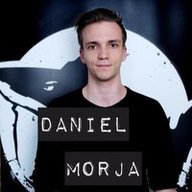Project 1: Color Clash
In this project my main focus from the start was to implement a quick prototype to test the vehicle physics and camera angle to give the designers something to decide the gameplay core upon. From there I continued working with all gameplay related subjects such as collision handling, multiplayer split-screen, keyboard and gamepad support, race track spline tracking, shooting & powerup mechanics and HUD elements. I also implemented a 2D menu system and an emissive shader.
Project 2: FUMP!
My main focus in this project was gameplay, physics, tools and audio. Since this project was centered around Havok physics, I decided to start with the physics simulation very early on to make sure we had the capability to achieve the vision we were aiming for. First week we had a system of destructible tiles, with placeholder characters to navigate around with.
From there I continued working with Havok and implemented a level editor that could switch tile models/textures and import Havok collision shapes combined with meshes that artists created directly from Maya, and then place and rotate them in the game world.
With the Havok based world with tiles and static/dynamic props completed I switched focus to player mechanics. I implemented the grenade shooting mechanic, which also used Havok dynamic bodies and explosions. For all the explosions and grenade trails I implemented particles, which needed a different shader for Playstation 4. The particles had modifiable parameters that artists could experiment with for themselves. I also implemented animation blending for all characters, and looping/event based animations for many of the props.
After the core gameplay mechanics were in place I worked on audio using FMOD. We had 4 playable characters with different voices that were activated using events. All voices had to be normalized and prioritised while also working in conjunction with the explosions and music.
Finally I implemented the in game HUD. The hud consisted of a leaderboard with interpolating positions, and a kill feed. All dynamic HUD elements were player icons (with correct character and color) combined with game icons for a result of a simple, easy to understand HUD.



